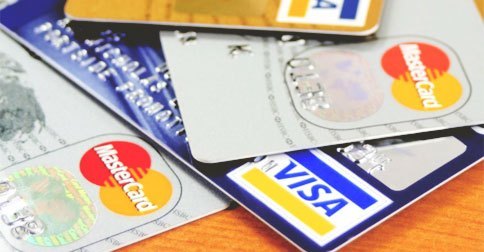
Here’s a serious question: How long will it be before you have net investment income?
Five years, the length of a typical car loan?
Thirty years, the length of a home mortgage?
The rest of your life, the effective length of most credit card debt?
The broad answer to that question is grim. Few people achieve net investment income. Ever. They may have some savings. But it’s likely that what they pay in interest every year far exceeds anything they receive in interest or dividends on their savings.
But the fastest way to improve your life is to get out from under debt and work toward having net investment income. Once you have net investment income, you have more assets working for you than you have liabilities working against you.
It’s important here not to be confused by our stuff. Lots of people have assets — cars, appliances, consumer toys like boats, RVs and all-terrain vehicles. More than 60% of all households still own their homes.
This is what makes us American consumers. It’s pretty much what defines being middle class.
But we have all those things by borrowing money. That means we are paying interest, not receiving it. It also means that we lose a large part of our income to lenders who provide the money.
Is this a big deal? I think so.
By my calculation, our lenders are happy when we’re forking over nearly 20% of our gross income in interest payments. That’s more than most people pay in employment taxes or income taxes. And that doesn’t count lenders who collect the big juice: the credit card companies, the payday lenders, the rent-to-buy stores and the we-tote-the-note car lot lenders. They don’t care how much of your income goes to interest, as long as you pay it.
Surprised at that 20% of income figure? I was, too. Here’s how I got it. The rules of thumb for consumer debt service are that we should pay no more than 28% of income for supporting a home (mortgage, taxes, insurance) and not more than an additional 8% for other debt such as credit cards, car loans, student loans, etc. That’s a total limit of 36%.
If you assume a five-year car loan at 4.74% (the current rate cited on bankrate.com), interest on that loan will consume just less than 1% of your income while you pay off the loan.
In Texas, real estate taxes are about 2% of a home’s value per year. Insurance is about one-half of a percent. Assuming the house you purchase costs about three times your annual income, that leaves about 20% of income for mortgage payments. Since less than 10% is principal repayment in the first five years of payments, that means about 18% of income is going to interest payments if you are a new homeowner.
Add the two and conventional lenders are happy to collect 19% of your total income and pat you on the back as a good borrower. Lots of people pay more because they’ve got a surprising amount of credit card debt or debts to the truly predatory lenders.
We’re creative about borrowing. Our lenders, all of them, are equally creative about lending.
The payoff here is enormous. It’s like a gigantic pay raise, not to mention a massive increase in personal freedom and security. It’s even possible that the satisfaction in having reached net investment income is greater than the satisfaction in any consumer good you could have by borrowing.
Fortunately, achieving net investment income isn’t a soft, squishy goal. It’s a hard number, one that you can measure and see. It’s a number you can check every year simply by adding the interest payment numbers on statements from your lenders. Nor does it require any investment smarts. Just follow the interest rates you pay or receive in these three easy steps.
- Step 1: With credit card debt costing more than the long-term returns on common stocks, your best investment is to pay off your credit cards. ASAP. Pay them off until you no longer see interest charges. Then switch to no-cost cards that give you discounts on your purchases.
- Step 2: Paying off your credit cards is likely to bring you a higher credit rating. Use it to negotiate lower interest rates on debt you may still need, such as home or auto loans.
- Step 3: Don’t forget that your goal is net investment income, not no interest payments. So think about how much you can earn with money that could be paying off debt. Once you’ve paid off the high-cost debt, you’ll most likely benefit by putting money into your IRA or 401(k) accounts and accumulating investment income there.
Is this simple? You bet.
Sadly, simple isn’t the same as easy.





























